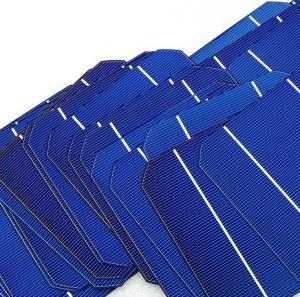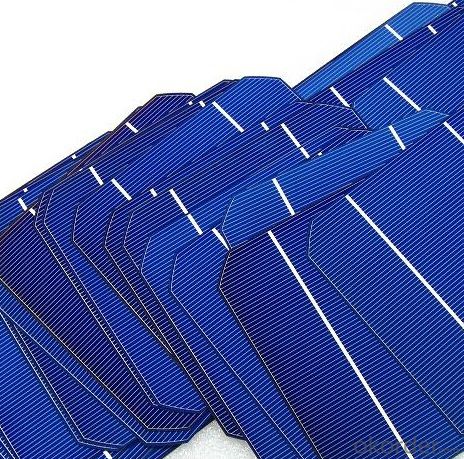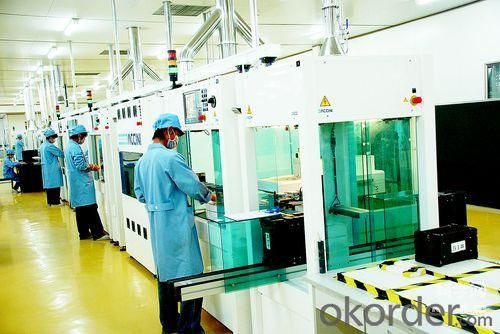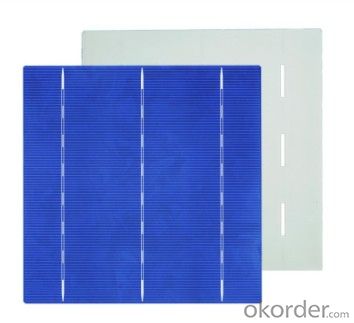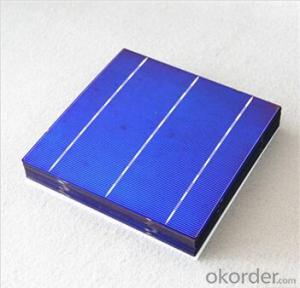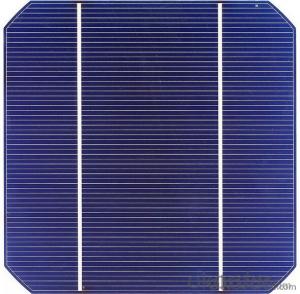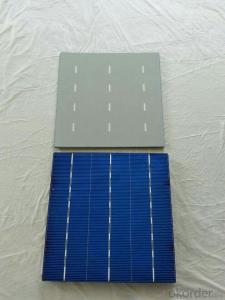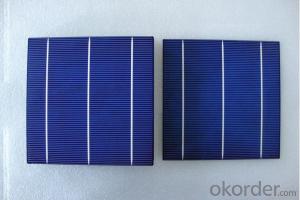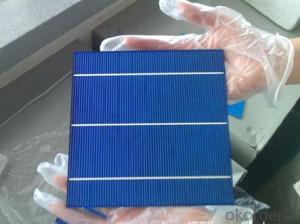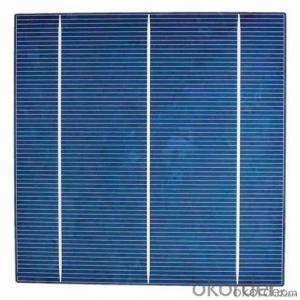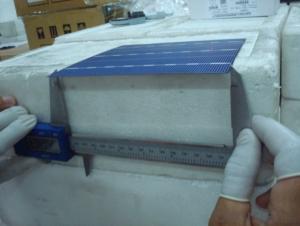3rd Generation Solar Cells:Polycrystalline Solar Cells with 3BB A-Grace17.8 Efficiency
- Loading Port:
- Shanghai
- Payment Terms:
- TT or LC
- Min Order Qty:
- 10000 watt
- Supply Capability:
- 5000000 watt/month
OKorder Service Pledge
OKorder Financial Service
You Might Also Like
Brief Introduction of Solar Cells
A solar cell, is an electrical device that converts the energy of light directly into electricity by the photovoltaic effect, which is a physical and chemical phenomenon. It is a form of photoelectric cell, defined as a device whose electrical characteristics, such as current, voltage, or resistance, vary when exposed to light. Solar cells are the building blocks of photovoltaic modules, otherwise known as solar panels.
Advantage of Polycrystalline Solar Cells
World’s Leading Manufacturer Equipment. We imported the newest and leading production equipment from abroad. Advanced equipment can guarantee the stable quality of cells. Auto production line can also save labor cost which will further cut our production cost.
Bulk supply: With the production capacity of 500MW, we can produce large quantity every month. This can satisfy most customer requirement.
Usage of Polycrystalline Solar Cells
Solar cells are often electrically connected and encapsulated as a module. Photovoltaic modules often have a sheet of glass on the front (sun up) side, allowing light to pass while protecting the semiconductor wafers from abrasion and impact due to wind-driven debris, rain, hail, etc. Solar cells are also usually connected in series in modules, creating an additive voltage. Connecting cells in parallel will yield a higher current; our solar cells have passed IEC Certification. With high and stable quality, our cells can greatly improve the performance of Solar Modules.
Factory Picture of Solar Cells
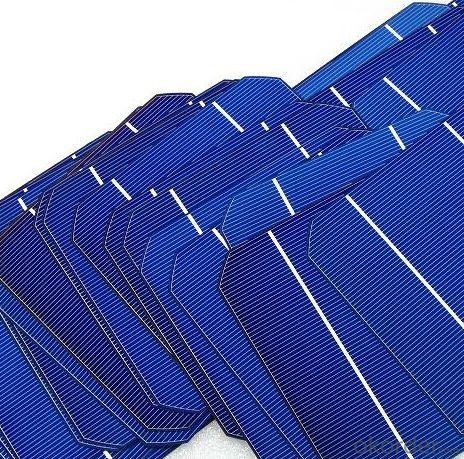
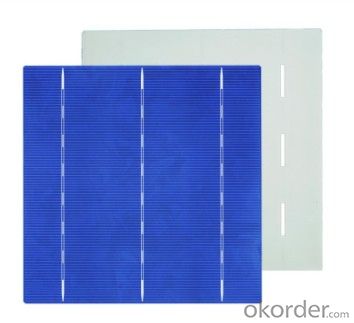
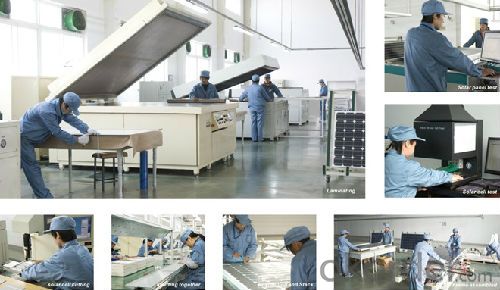
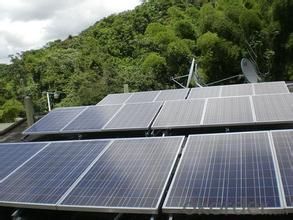
FAQ
We have organized several common questions for our clients,may help you sincerely:
What’s price per watt?
A: It’s depends on the quantity, delivery date and payment terms of the order. We can talk further about the detail price issue. Our products is high quality with lower price level.
Can you tell me the parameter of your solar cells?
We have different series of cells with different power output, both from c-si to a-si. Please take our specification sheet for your reference.
How do you pack your products?
We have rich experience on how to pack the panels to make sure the safety on shipment when it arrives at the destination.
Can you do OEM for us?
Yes, we can.
How long can we receive the product after purchase?
In the purchase of product within three working days, We will arrange the factory delivery as soon as possible. The perfect time of receiving is related to the state and position of customers. Commonly 7 to 10 working days can be served.
- Q: Can solar cells be used for powering concert venues?
- Yes, solar cells can be used for powering concert venues. Solar cells, also known as photovoltaic cells, convert sunlight into electricity. Concert venues typically require a significant amount of energy for lighting, sound systems, and other equipment. By installing solar panels on the venue's roof or in nearby open spaces, the electricity generated can be used to power the venue. This not only reduces dependence on fossil fuels but also helps to lower energy costs and minimize the venue's carbon footprint.
- Q: What do the solar cell suppliers provide once we purchase the order from the solar cells from them.
- There is a technical term called turnkey project, which is somehow the solar cell suppliers will provide more than selling the solar cells to you.
- Q: How do solar cells perform in areas with high levels of volcanic ash?
- Solar cells may not perform optimally in areas with high levels of volcanic ash. Volcanic ash can reduce the amount of sunlight reaching the solar cells, thereby decreasing their efficiency. Additionally, ash particles can settle on the surface of the solar panels, blocking sunlight and reducing their output further. Regular cleaning and maintenance may be required to ensure effective performance in such areas.
- Q: Can solar cells be used for heating?
- Yes, solar cells can be used for heating through the use of solar thermal collectors. These collectors capture the sun's energy and convert it into heat, which can then be used for various heating purposes such as heating water or indoor spaces.
- Q: Can solar cells be used in desert regions?
- Yes, solar cells can be used in desert regions. In fact, desert regions are often ideal for solar energy production due to their high solar irradiation levels and abundant sunlight. The availability of vast open spaces in deserts allows for the installation of large-scale solar farms, which can efficiently harness solar energy to generate electricity. Additionally, the dry climate in deserts minimizes the risk of cloud cover, ensuring consistent solar energy production.
- Q: Can solar cells be used for wireless communication devices?
- Yes, solar cells can be used for wireless communication devices. Solar cells convert sunlight into electrical energy, which can power various devices including wireless communication devices such as smartphones, tablets, or even Wi-Fi routers. This enables the devices to operate without relying on traditional power sources, making them more flexible and sustainable.
- Q: Can solar cells be used in water purification systems?
- Yes, solar cells can be used in water purification systems. Solar cells can generate electricity from sunlight, which can power various components of water purification systems such as pumps, filters, and disinfection processes. This enables the system to operate independently from the grid, making it suitable for remote or off-grid locations. Additionally, solar energy is a clean and sustainable power source, aligning with the environmentally-friendly nature of water purification processes.
- Q: Can solar cells be used for powering shopping malls?
- Yes, solar cells can be used for powering shopping malls. By installing a sufficient number of solar panels on the rooftops or in parking lots, shopping malls can generate renewable energy to meet a portion or even the entirety of their power needs. This can help reduce dependence on fossil fuels, lower electricity costs, and contribute to a more sustainable and environmentally friendly operation.
- Q: Can solar cells be used in extreme climates?
- Yes, solar cells can be used in extreme climates. While extreme heat or cold may slightly affect the performance of solar panels, modern solar technology is designed to withstand a wide range of temperatures. In fact, solar cells can even generate electricity in extremely cold conditions, such as snowy environments. Additionally, advancements in solar technology have made panels more resilient to extreme weather conditions like high winds or heavy rain.
- Q: What is the impact of snowmelt on solar cell efficiency?
- The impact of snowmelt on solar cell efficiency is generally positive. Snowmelt helps to remove any snow cover on solar panels, allowing them to receive more sunlight and generate more electricity. This increased exposure to sunlight improves the efficiency of the solar cells and enhances their performance. Additionally, snowmelt also helps to prevent any potential damage that could occur due to the weight of accumulated snow on the panels.
Send your message to us
3rd Generation Solar Cells:Polycrystalline Solar Cells with 3BB A-Grace17.8 Efficiency
- Loading Port:
- Shanghai
- Payment Terms:
- TT or LC
- Min Order Qty:
- 10000 watt
- Supply Capability:
- 5000000 watt/month
OKorder Service Pledge
OKorder Financial Service
Similar products
Hot products
Hot Searches
Related keywords
